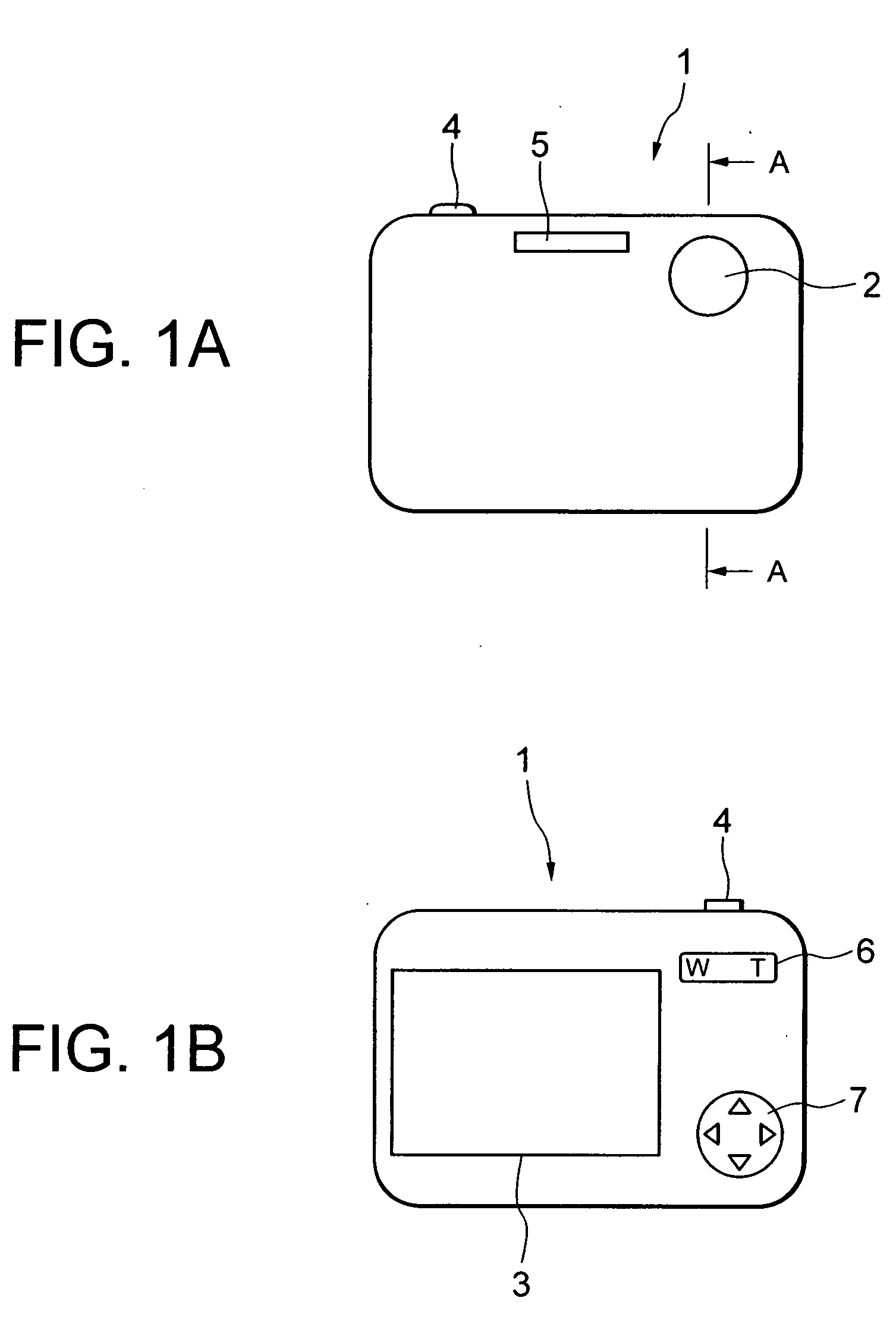Zoom lens system and optical device using thereof
a zoom lens and optical device technology, applied in the field of zoom lens systems and optical devices, can solve problems such as image blur and deterioration of imaging performance, and achieve the effect of high optical performan
- Summary
- Abstract
- Description
- Claims
- Application Information
AI Technical Summary
Benefits of technology
Problems solved by technology
Method used
Image
Examples
first embodiment
[0081]A zoom lens system according to a first embodiment is explained.
[0082]A zoom lens system according to the first embodiment is composed of, in order from an object, a first lens group having positive refractive power and an optical path bending member for bending the optical path by substantially 90 degrees, a second lens group having negative refractive power, a third lens group having positive refractive power, and a fourth lens group having positive refractive power. When the focal length varies from a wide-angle end state to a telephoto end state, which is called as zooming, the first lens group and the third lens group are fixed with respect to an image plane, the second lens group is moved to the image, and the fourth lens group is moved at first to the object and then to the image plane such that a distance between the first lens group and the second lens group increases, and a distance between the second lens group and the third lens group decreases. Upon generating a c...
example 1
[0105]FIG. 3 is a diagram showing a lens configuration of a zoom lens system according to Example 1 of the first embodiment. Although the zoom lens system according to Example 1 deflects its optical path by 90 degrees as shown in FIG. 2, the optical path is extended in FIG. 3.
[0106]In FIG. 3, the zoom lens system according to Example 1 is composed of, in order from an object, a first lens group G1 having positive refractive power and a rectangular prism P for bending the optical path by 90 degrees, the second lens group G2 having negative refractive power, a third lens group G3 having positive refractive power, and a fourth lens group G4 having positive refractive power. When the focal length varies from a wide-angle end state W to a telephoto end state T, the first lens group G1 and the third lens group G3 are fixed with respect to the image plane I, the second lens group G2 is moved to the image plane I, and the fourth lens group G4 is moved at first to the object and then to the ...
example 2
[0119]FIG. 8 is a diagram showing a lens configuration of a zoom lens system according to Example 2 of the first embodiment. Although the zoom lens system according to Example 2 deflects its optical path by 90 degrees as shown in FIG. 2, the optical path is extended in FIG. 8.
[0120]In FIG. 8, the zoom lens system according to Example 2 is composed of, in order from an object, a first lens group G1 having positive refractive power and a rectangular prism P for bending the optical path by 90 degrees, the second lens group G2 having negative refractive power, a third lens group G3 having positive refractive power, and a fourth lens group G4 having positive refractive power. When the focal length varies from a wide-angle end state W to a telephoto end state T, the first lens group G1 and the third lens group G3 are fixed with respect to the image plane I, the second lens group G2 is moved to the image plane I, and the fourth lens group G4 is moved at first to the object and then to the ...
PUM
 Login to View More
Login to View More Abstract
Description
Claims
Application Information
 Login to View More
Login to View More - R&D
- Intellectual Property
- Life Sciences
- Materials
- Tech Scout
- Unparalleled Data Quality
- Higher Quality Content
- 60% Fewer Hallucinations
Browse by: Latest US Patents, China's latest patents, Technical Efficacy Thesaurus, Application Domain, Technology Topic, Popular Technical Reports.
© 2025 PatSnap. All rights reserved.Legal|Privacy policy|Modern Slavery Act Transparency Statement|Sitemap|About US| Contact US: help@patsnap.com



